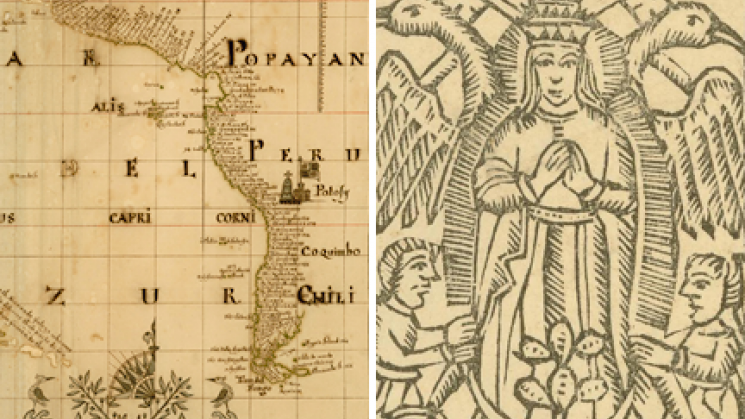Presentations by Elizabeth Montañez-Sanabria and Raphaèle Preisinger

Please join us for presentations by JCB Fellows Elizabeth Montañez Sanabria and Raphaèle Preisinger.
Elizabeth Montañez-Sanabria (Pontifica Universidad Católica de Valparaíso, Marie L. and William R. Hartland Fellow) presents "Piracy and Mapping: Cartographical Knowledge and the Opening of the South Sea, 1570-1700." This presentation will examine the pivotal and mostly overlooked role of pirates and privateers as creators of cartographic and nautical knowledge. This knowledge came from diverse overlapping sources, including reports and journals from previous Spanish and non-Spanish voyages, access to maps and nautical charts, the capture of local pilots, and especially, exploration voyages to collect first-hand information and draw new maps. The goal of this research is to understand how information and knowledge circulated across the Atlantic and Pacific and enabled political decision-making among Spain's rival powers, including the Dutch Republic and the English and French monarchies. Thanks to this strategic knowledge, this talk argues that the South Sea transformed from an exclusively Spanish into an international sea by the eighteenth century.
Raphaèle Preisinger (University of Bern, Norman Fiering Fellow) presents "The Virgin of Guadalupe, the Eagle and the Cactus: (Re)tracing the Origins of a Criollo Nationalist Symbol." The Virgin of Guadalupe in Mexico City, which has been venerated since the 16th century, became a symbol of creole nationalist aspirations from the mid-17th century on. Among the images expressing an understanding of the Virgin of Guadalupe as an explicitly American phenomenon is an iconography which juxtaposes her to the Aztecs' toponym for their capital city, an eagle with a serpent standing on a nopal cactus. Hitherto, this iconography has been linked to Miguel Sánchez's first published account of the Virgin of Guadalupe's apparition legend from 1648, which considers the Virgin's appearance to the indigenous Mexican Juan Diego a 'transfiguration' of the Apocalyptic Woman 'seen' by St. John of Patmos. This talk points to new directions of research that aim at tracing even earlier origins for this merging of visual elements and seek to understand the motifs behind it.